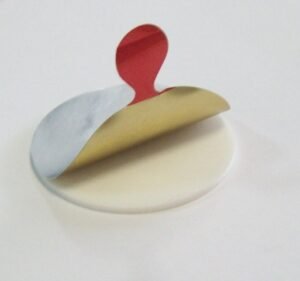Liner Material Functions
Liner material sits between a cap and the bottle. They are traditionally used for their ability as adequate seals for bottles, lining material that prevents leakage, and optionally to provide a form of tamper evidence.
When thinking of the type of liner material you will need for your product, chemical compatibility and correct certification for contact with the product is crucial. Using the wrong liner material can lead to expensive and sometimes life-endangering mistakes that can jeopardize your product brand and integrity.
Chemical products and consumer/food products can require liners that differ significantly in their properties. Depending on the job these liners have to comply with, the variety in liner materials can be extensive and choosing what fits your product best can be a daunting task.
Generally, functions that liners have to carry out can be any combination of the following:
- Moisture barriers
- Oxygen barriers
- Chemical-resistant barriers
- Consumer tamper evidence safety
- Leakage prevention
The compatibility of the caps, liners and the containers with one another has to be tested, along with the components’ compatibility with the product inside.
With these numerous considerations, the liner material alone can significantly affect the cost of the cap and the rest of the production line. As such, it is important to know which liner is ideal for your setup.
Selecting The Right Type
Among the wide range of lining material available, choosing the appropriate one for your product can be narrowed down with the following key questions.
- What type of product is it: liquid, powder or solid?
- What level of tamper evidence is required?
- Once opened, is resealing the product for freshness required?
- Will the liner material be used to promote the brand?
Liner Material Based on Components
There are two general types of heat induction liner based on their components:
This type of lining material is used more often for one-use products. They are more suited for dry products because these usually need less protection and may not need a freshness seal once the package has been opened.
 The lining “sticks” to the bottle after sealing and is one of the most common forms of sealing. Examples of this type include side tabs and lift’n’peel options.
The lining “sticks” to the bottle after sealing and is one of the most common forms of sealing. Examples of this type include side tabs and lift’n’peel options.
Although this type is used more often for dry products, there are ways to utilize this liner for other purposes. Adding a barrier layer can provide protection against aggressive products. An air and watertight hermetic seal can prevent leakage in the packaging of a wider variety of products including food and beverages, cosmetics, and pharmaceuticals.
The two-piece liner type can also do what the one-piece liner can, but it has its own additional advantages. One application is for resealing a container once it has been opened. This liner material is appropriate for when freshness of the product must be kept in mind. This resealing ability is necessary for many products particularly in the food industry.
Both of these liner materials are capable of the fundamental functions of lining material, including prevention of leakage, prolonging the product’s shelf-life, serving as a barrier against moisture and oxygen, and providing proof of tampering. Choosing which type is more applicable for your own production line will depend on what function you will need your liner to do.
Benefel Pty Ltd and Adeneli Packaging
Our teams at Benefel Pty Ltd. and Adeneli Packaging can help you with your liner material needs. Our experts are on standby to take your calls and chats. Whatever product you may have, we have the perfect liner material for you. Product consultation is free and we are happy to develop partnerships with our customers by supplying consumable products that work well with packaging machinery.




Follow Us